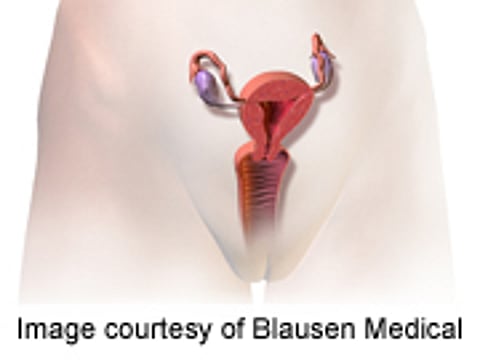WEDNESDAY, April 25 (HealthDay News) -- The anatomic existence of the G-spot has been documented, and it has been identified as a distinguishable anatomic structure located on the dorsal perineal membrane, according to a study published in the May issue of The Journal of Sexual Medicine.
Adam Ostrzenski, M.D., Ph.D., from the Institute of Gynecology in St. Petersburg, Fla. conducted a stratum-by-stratum vaginal wall dissection on a fresh cadaver to identify the anatomic structure of the G-spot.
Ostrzenski located a distinguishable anatomic structure on the dorsal perineal membrane, near the upper part of the urethral meatus, creating a 35-degree angle with the lateral border of the urethra. He identified a well-delineated sac with walls that resembled fibroconnective tissues and looked similar to erectile tissues. Bluish irregularities were visible through the coat on the superior surface of the sac. Blue grape-like anatomic compositions emerged upon opening the upper coat of the sac, with dimensions of 8.1 mm length × 3.6 to 1.5 mm width × 0.4 mm height. Three distinct areas were identified within the G-spot: the head (proximal), the middle part, and a tail (distal) from which a rope-like structure emerged, which disappeared into surrounding tissue after 1.6 mm.
"The anatomic existence of the G-spot was documented in this study with potential impact on the practice and clinical research in the field of female sexual function," Ostrzenski writes.
Abstract
Full Text (subscription or payment may be required)


